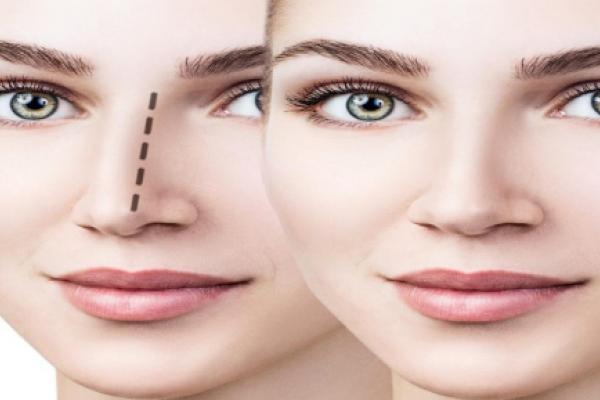What Is Rhinoplasty and For What Purpose Is It Performed?
Rhino means nose. Rhinoplasty is a surgery performed to reshape the nose. This surgery, which includes shaping the bone and cartilage structure in particular, is applied to change the shape of the nose, to facilitate breathing, or to perform both.
To Whom Is Rhinoplasty Applied?
Evaluating the external appearance of the nose, nasal aesthetics can be applied to people with sharp arch, asymmetry, curvature, wide nasal tip, and low nasal tip. In addition, operations to correct the shape of the nose can be performed after traumas or tumor-related deformities and cleft lip nose deformity observed after cleft lip. In some cases, surgeries called secondary rhinoplasty can be performed after a previous aesthetic nose surgery.
Is There an Age Limit for Rhinoplasty?
These operations should be performed starting from the ages when bone and cartilage development is completed. Since the development takes place differently in girls and boys, rhinoplasty can be performed after the age of 16 in girls and after the age of 18 in boys.
What are the Types of Rhinoplasty Procedures?
Rhinoplasty can be performed with or without surgery. Botox is one of the non-surgical rhinoplasty applications. During this procedure, which is carried out to lift the tip of the nose, an injection is made into the muscle that pulls the tip of the nose down, so that the muscle does not function temporarily. Thus, some lift is provided at the tip of the nose.
Another non-surgical rhinoplasty procedure is nose shaping, also known as liquid rhinoplasty. With this procedure, the desired aesthetic appearance can be achieved by filling in people with small arches and low nose tips. Correct patient selection is important in these procedures.
In patients undergoing surgery for nose aesthetics, open or closed rhinoplasty techniques are used depending on whether there is an incision in the area called the columella. Correct patient selection is important as both methods have advantages and disadvantages.
What Are the Points to Consider Before Rhinoplasty?
Before the nose surgery, it is very important to question the patient's / client's history completely, to reveal previous surgeries, comorbidities, or medications used. In addition, the patient's / client's expectations and demands should be analyzed correctly. Planning should be done not only according to the nose but also by evaluating the whole face (forehead, chin harmony, etc.). A surgery focused only on the nose may not be satisfactory in terms of ensuring harmony on the face. Performing forehead, nose, lip, and chin structure analysis together and intervening in a region or every region according to the need will yield much more satisfactory results. All of these procedures are called profiloplasty. In other words, it is the process of bringing the contours of the face into harmony when viewed from the side.
What Should the Patient Expect from Rhinoplasty and What Should Not?
The intersection of the patient's / client's demands and the surgeon's indication is extremely important. The expectation should be realistic according to the person's anatomical structure. In addition, it is extremely important that all of the positive and negative situations stated by the physician in the interview before the surgery are well understood and that the patient/client and physician start the process with a complete consensus.
How is Rhinoplasty Performed and How Does the Process Work?
Rhinoplasty can be performed under general anesthesia or sedation. Depending on the patient's condition and the procedure to be performed, the surgery takes an average of 2-3 hours. Although the first target in the surgery is the external appearance, the protection of breathing or the elimination of these problems in people with breathing problems is among the important criteria for the success of the result. Tampons and splints can be used after the surgery and a hospital stay is recommended for the same night. Depending on the surgeon's preference, splints and tampons can be removed between 1 and 7 days. If open rhinoplasty is performed, the stitches can be removed during this period.
How Long Does It Take for Full Recovery After Rhinoplasty?
After rhinoplasty, it is possible to return to work or school within 7 to 10 days. While there is a significant decrease in swelling in the first 3 weeks, it takes about 9 months for the nose to take its final shape.
Will There Be a Scar on the Face After Rhinoplasty?
In cases where open rhinoplasty is applied, there will be a small incision in the columella. But this scar will be quite short and unnoticeable. A scar-reducing cream with sun protection will be recommended by your doctor.
Will There Be Swelling and Bruising After Rhinoplasty?
Although swelling and bruising occur after nose surgery, this situation usually disappears within 1 week. In order to reduce swelling and bruising, it will be beneficial to lie down by keeping the head elevated and to make cold application around the eyes. Bruising will not be experienced in some procedures that can be performed without breaking bones (No osteotomy rhinoplasty).
What Are the Points to Consider After Rhinoplasty?
Situations that may cause bleeding and swelling in the early postoperative period should be avoided. In particular, it is necessary to take blood thinners, use hot steam, enter the sauna, and stay away from activities that will increase blood pressure. Afterward, traumas should be avoided during the bone and cartilage healing period for approximately 6-9 mont
”


